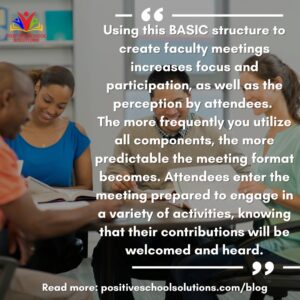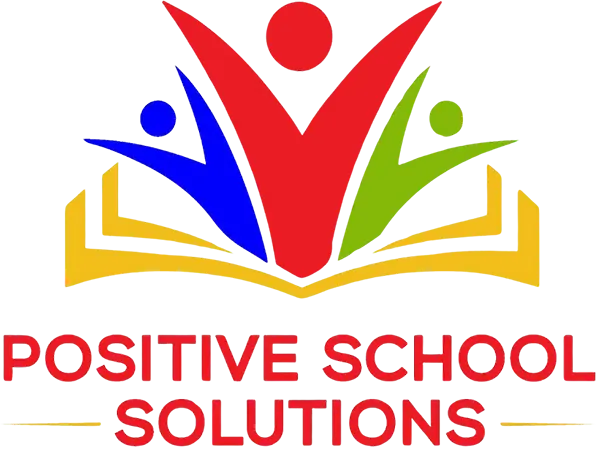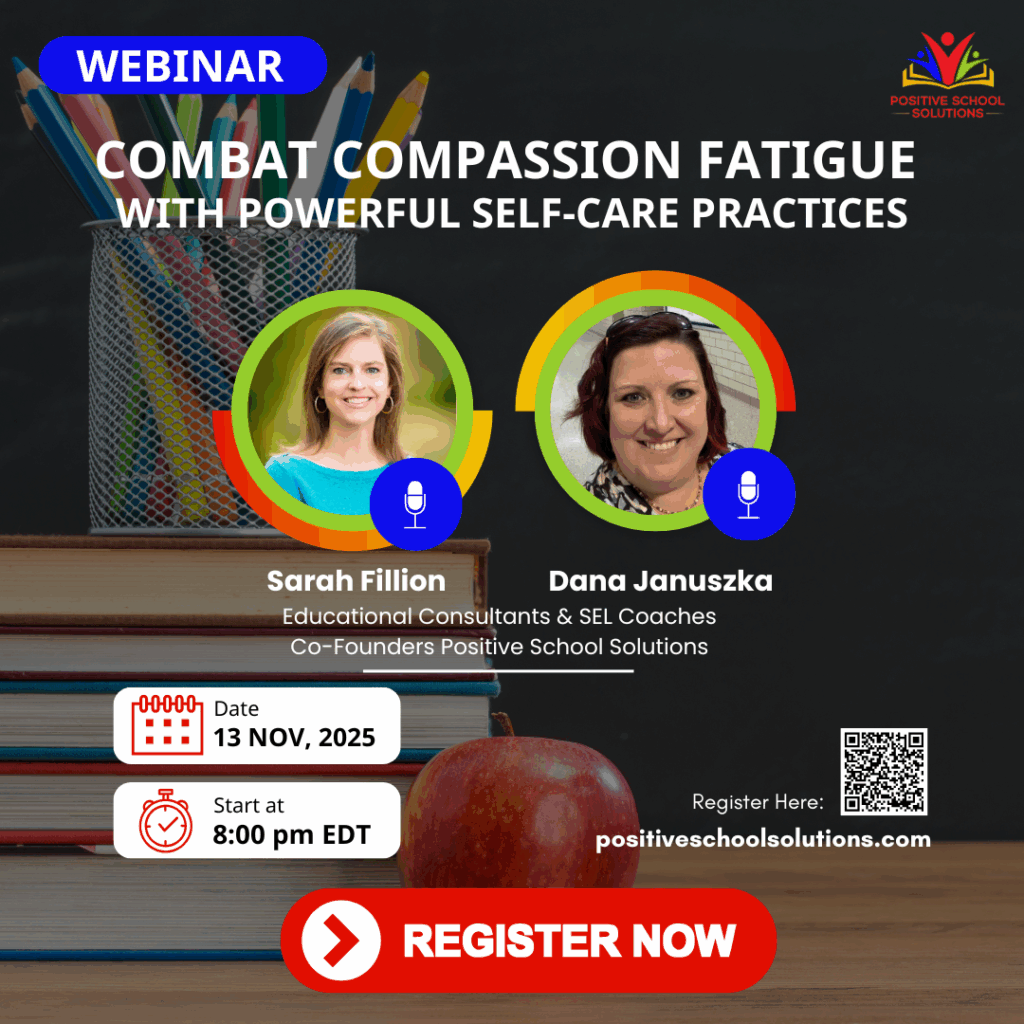 Here is a little-known fact: school faculty meetings do not have to suck. Instead of being viewed with disdain, school staff can, in fact, look forward to faculty meetings. By using our BASIC predictable structure that meets the needs of the adult learners in an engaging and interactive format, problems can be solved, camaraderie can be built, and new content can be learned. Leading from the front means that we intentionally design each faculty meeting as an opportunity to learn – staff members expand and deepen their knowledge on relevant content as well as best teaching practices that can be brought back into the classroom for their own high-quality lessons. It is time we change the narrative on faculty meetings and make them synonymous with high-level professional development opportunities.
Here is a little-known fact: school faculty meetings do not have to suck. Instead of being viewed with disdain, school staff can, in fact, look forward to faculty meetings. By using our BASIC predictable structure that meets the needs of the adult learners in an engaging and interactive format, problems can be solved, camaraderie can be built, and new content can be learned. Leading from the front means that we intentionally design each faculty meeting as an opportunity to learn – staff members expand and deepen their knowledge on relevant content as well as best teaching practices that can be brought back into the classroom for their own high-quality lessons. It is time we change the narrative on faculty meetings and make them synonymous with high-level professional development opportunities.
Our secret formula for a rich faculty meeting is BASIC. Let’s break down what each of these letters means.
Brief – While it should be short in nature, we’re talking about the noun version of this word, not the adjective. In the brief, clearly state what the objectives are for the meeting and to prepare attendees to ignite their thinking on the meeting topic. Sharing this information is critical to making the purpose of the faculty meeting clear to the audience.
Arrival – First impressions are important, and that includes the first impression of each and every meeting you hold. One way to create a positive first impression is to be at the door, ready to welcome each person as they enter. The short interactions allow you to set the tone for the meeting, gauge energy levels, transition individuals from teacher-mode into learner-mode, and strengthen personal connections.
Socialize – Maslow’s hierarchy of needs identifies belongingness as a basic psychological need for all human beings. Knowing this, and recognizing that in their day to day teaching, staff members might not have had opportunities to connect with many others in the building, makes this a critical element in each faculty meeting. Providing time for staff to connect with one another in a meaningful and purposeful way that supports the meeting goals helps to enhance the school community – fostering positive relationships and building a sense of safety.
Involve – A critical element to success of all professional development is to allow participants to be active and interactive. This includes opportunities to share their knowledge and experience, offer viable solutions to problems, or identify the relevance of the topic to their specific situation. The involve component of a faculty meeting is thoughtfully planned to engage all participants and create conditions for deep learning to ensue.
Closing – Just like gameshows, professional sports, books, debates, or movies, a strong closing can make a big difference. Closing out a faculty meeting by reviewing, summarizing, and reflecting increases engagement through providing time to synthesize the material and create a personal plan for next steps.
Using this BASIC structure to create faculty meetings increases focus and participation, as well as the perception by attendees. The more frequently you utilize all components, the more predictable the meeting format becomes. Attendees enter the meeting prepared to engage in a variety of activities, knowing that their contributions will be welcomed and heard.
While knowing this formula is critical to making faculty meetings impactful, another key factor is choosing the topics covered. Seizing the opportunity to use every faculty meeting purposefully (think of them as mini professional development sessions) increases the pressure of selecting topics that are purposeful to all staff members. Depending on the time of year and level of community, you may decide to focus on creating a unifying vision around expectations or the timing may be better for celebrating success. Aligning the right topic with timing is essential in creating a powerful experience at each faculty meeting.
A challenge, we know, is that your time is very limited. We want to support you in delivering top-notch faculty meeting sessions, which is why we have designed ready-to-use plans that include all resources you need to facilitate your meeting successfully. The plans are:
- Applicable to in-person and virtual meetings
- Designed following the BASIC structure
- Engaging in a variety of ways to meet the needs of different learning styles
- Easy to personalize
- Ready to use
In a recent survey, the following three elements were the most frequently shared by participants as ways to increase engagement in faculty meetings:
- Clear purpose
- Connecting with others
- Choice in what is being learned
Our faculty meetings have these elements embedded throughout the components and have a bonus piece (S for Stretch) to ensure that the momentum from the meeting continues. Using the BASICS for each of your meetings will help you engage your staff in creating a positive climate schoolwide – and with a variety of powerful topics to choose from, you’ll be ready to lead your staff in powerful faculty meetings as soon as tomorrow.
If you’re ready to join us in changing the faculty meeting narrative, access our fully planned faculty meetings here or reach out to discuss a customized faculty meeting plan to meet your school goals today.
Written by Sarah Fillion & Dana Januszka for Positive School Solutions 2020

